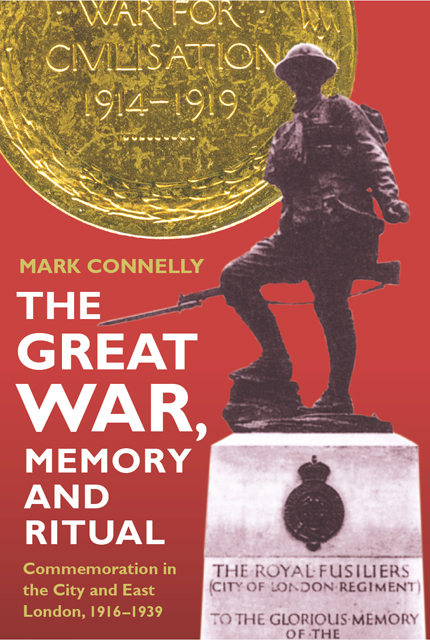10 - The East End Jewish Ex-Service Movement
Published online by Cambridge University Press: 22 March 2023
Summary
This chapter will show how one particular community of the East End was affected by the Great War. The Jewish community of East London was probably its most distinctive racial minority, distinguished by its own language and customs. Mainly consisting of Russian and eastern European Jews, the community faced much suspicion and distrust up to the Great War. Indeed, during the conflict itself antisemitic sentiments were often close to the surface. However, it was also a time whenmany Jews rallied to their adopted country. Service in the armed forces brought death and grieving home to Jewish families. For the families of the bereaved a questionwas posed: should they commemorate their loved ones in a style similar to that of the Gentile communities, or find a distinctly Jewish form of war remembrance?
The size of the East End Jewish community in 1914 is a matter of some debate. The Toynbee Hall survey of 1900 estimated the Jewish population of East London to be some 100,000. Julia Bush believes that this figure is a little too high but states that it had reached that point by 1914. The great majority of these Jews had come to Britaininorder to escape Tsarist persecution. They mostly remained where they entered London and so the metropolitan borough of Stepney took on the appearance of a stetl. Reliance on Yiddish and the distinctive culture of the immigrants soon made them the objects of resentment in the poverty-stricken East End. The separatist nature of the community led to the accusation that it was a seditious and unpatriotic force dwelling at the heart of the empire. Such fears seemed to have a basis in reality when the involvement of Jewish radicals in the famous 1911 Siege of Sydney Street became known.
The state reacted to growing fears over immigration with the Aliens Act of 1905 which limited the number of foreign Jews who could seek asylum in Britain. In order to further alleviate the situation the established Anglo- Jewish community attempted to quell antisemitism by encouraging assimila- tion and integration. Walter Besant noted this development in his 1900 work, East London: ‘I am informed, however, that the leaders of the people in London are persistent in their exhortations to the new-comers to make them- selves English as fast as possible; to send their children to the Board-schools, and to make them English.'
- Type
- Chapter
- Information
- The Great War, Memory and RitualCommemoration in the City and East London, 1916-1939, pp. 212 - 229Publisher: Boydell & BrewerPrint publication year: 2001



